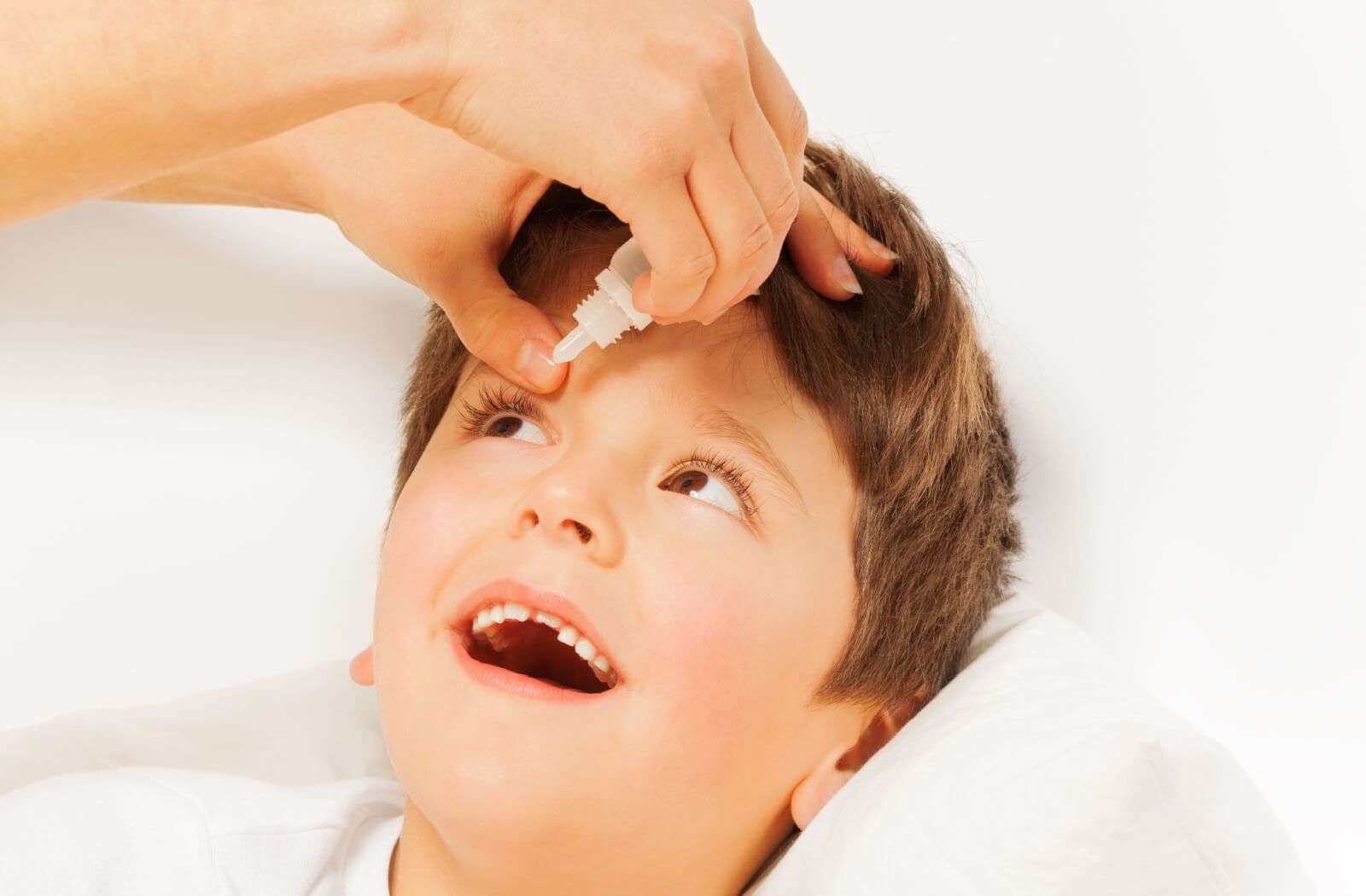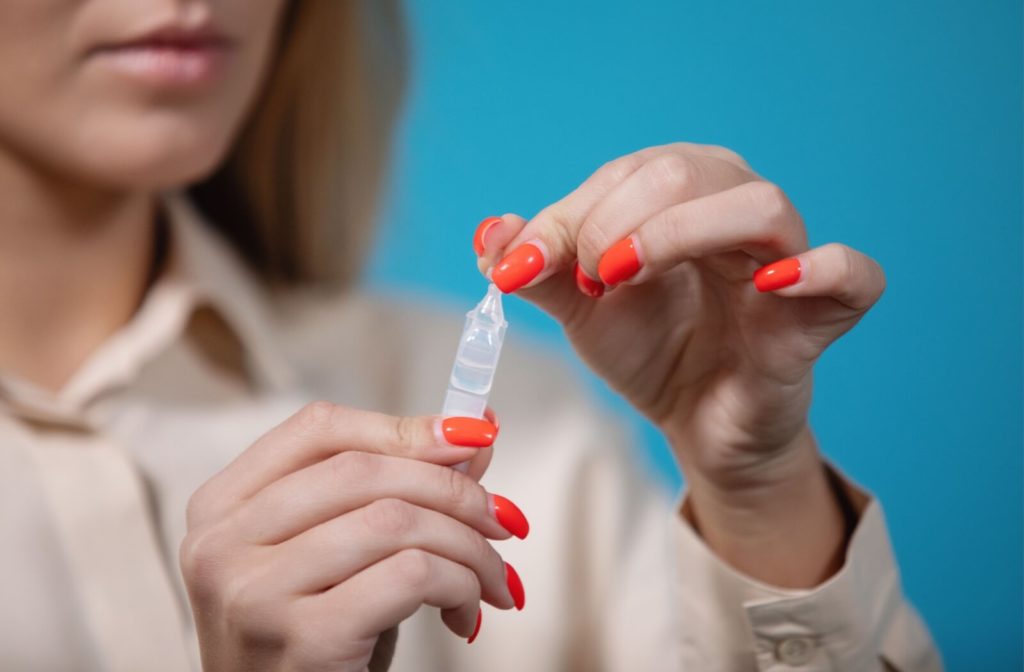You may have used eye drops to find relief from dry eyes or used them occasionally to avoid dealing with allergies. But eye drops can do a lot more—especially when they include a low concentration of medication like tropicamide or atropine. Due to how these compounds interact with eye muscles, these eye drops are often used during eye exams and for myopia control. But how long do the effects of dilating eye drops last?
You’ll likely experience blurry vision and light sensitivity that could last from a few hours up to a few days in rare cases. However, most children receiving low-dose atropine have little to no side effects. If symptoms persist, speak with your optometrist.
Dilating Eye Drops for Eye Exams
During an eye exam, your optometrist will need to check the different parts of your eye. Sometimes, they may be unable to see inside your eye’s internal mechanisms, typically due to smaller pupils.
If this is the case, your optometrist will likely apply drops like Tropicamide or Phenylephrine to dilate the pupils. This lets more light enter the eyes, making it much easier for your optometrist to see inside. Then, they can thoroughly determine how healthy your eyes are and whether any potential problems are developing.
When applied properly, these drops help to paralyze certain muscles in the eye and dilate your pupils. Don’t worry—these results are temporary!
Atropine Eye Drops for Myopia Control
Myopia control refers to several different practices designed to slow or stop the progression of myopia in children. This is typically done through various methods such as specialty eyeglass lenses, contact lenses, or low dose atropine eye drops. It’s important to note that even if your child is prescribed atropine, he or she will still need contact lenses or eyeglasses to see clearly.
When used alongside other methods of myopia control, low-dose atropine eye drops can help slow how far myopia progresses. This can eventually reduce the need for stronger prescriptions and reduce the risk of long-term eye conditions often caused by extreme myopia.
How Long Does It Take for Dilating Eye Drops to Wear Off?
Dilating eye drops paralyze certain eye muscles, which helps enlarge your pupils. This means that, once applied, you can expect:
- Light sensitivity, as more light can enter the eye
- Blurry vision as the eye may struggle to focus properly, particularly up close
You’ll likely experience light sensitivity and blurred vision that could last from a couple hours to a few days, but children receiving low doses for myopia control typically have little to no side effects.
During this time, it can help to use sunglasses if you’re exposed to bright light. Try to avoid driving, especially immediately after the drops are applied—this can be dangerous. Instead, have a loved one attend your eye appointment so you can avoid getting behind the wheel. Forgot your sunglasses? Don’t worry – we have disposable shades for you to wear home from your visit!
While symptoms are receding, you might notice that your pupils appear larger than normal. This is perfectly normal. If symptoms last longer than a week, contact your optometrist.
How to Insert Atropine Eye Drops for Myopia Control

Since atropine is often used to control myopia in children, parents may wonder how to get their children to use eye drops.
There’s good news—you can apply the drops yourself. Here’s a quick step-by-step guide:
- Wash your hands. The importance of proper hygiene can’t be overstated; if you have dirty hands and touch your child’s eyes, you can transfer bacteria, viruses, and other harmful contaminants.
- Have your child sit in a well-lit area and lean their head back.
- Gently pull down the lower eyelid with one hand to create a small pocket.
- Hold the dropper in your other hand. Carefully apply the recommended number of drops into this exposed pocket.
- Have your child close their eye gently and hold it closed for at least 60 seconds.
- Rewash your hands to prevent any potential transfer of contaminants.
Always store atropine and all other medicine securely out of the reach of children. While atropine is safe to use as eye drops, it can be toxic if ingested, so make sure your child does not have access to the drops without your supervision.
Keep in Touch with Your Optometrist
It’s important to stress that atropine eye drops should only be used following a thorough consultation with an eye care professional. If you think your child could benefit from them, contact our team at Simcoe Optometric Clinic.Our team can give you personalized advice on usage, dosage, and any potential side effects. When it comes to your eyes, you should always listen to an eye care professional. So, book an appointment with us today, and let’s work together to keep your child’s eyes healthy and safe!



